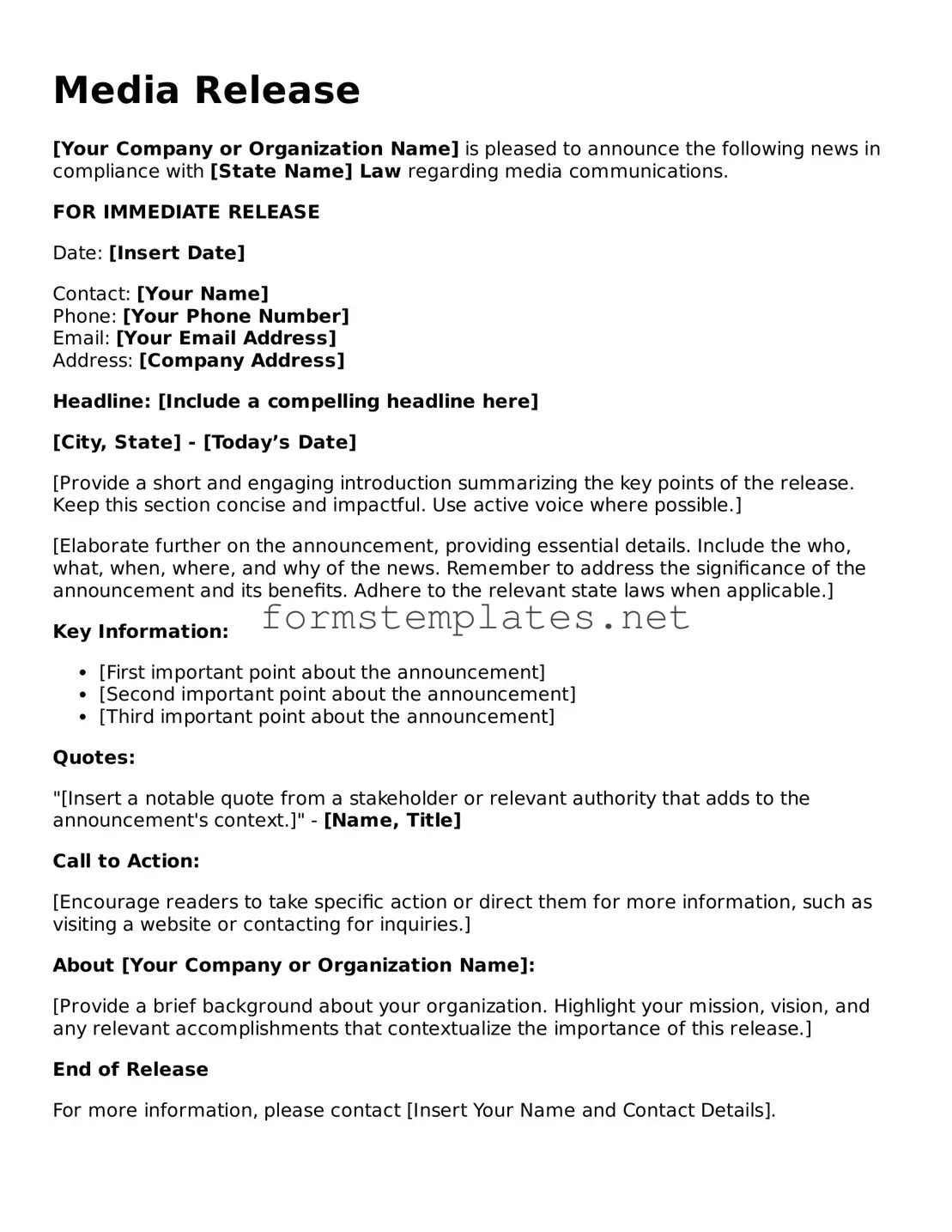Media Release
[Your Company or Organization Name] is pleased to announce the following news in compliance with [State Name] Law regarding media communications.
FOR IMMEDIATE RELEASE
Date: [Insert Date]
Contact: [Your Name]
Phone: [Your Phone Number]
Email: [Your Email Address]
Address: [Company Address]
Headline: [Include a compelling headline here]
[City, State] - [Today’s Date]
[Provide a short and engaging introduction summarizing the key points of the release. Keep this section concise and impactful. Use active voice where possible.]
[Elaborate further on the announcement, providing essential details. Include the who, what, when, where, and why of the news. Remember to address the significance of the announcement and its benefits. Adhere to the relevant state laws when applicable.]
Key Information:
- [First important point about the announcement]
- [Second important point about the announcement]
- [Third important point about the announcement]
Quotes:
"[Insert a notable quote from a stakeholder or relevant authority that adds to the announcement's context.]" - [Name, Title]
Call to Action:
[Encourage readers to take specific action or direct them for more information, such as visiting a website or contacting for inquiries.]
About [Your Company or Organization Name]:
[Provide a brief background about your organization. Highlight your mission, vision, and any relevant accomplishments that contextualize the importance of this release.]
End of Release
For more information, please contact [Insert Your Name and Contact Details].
